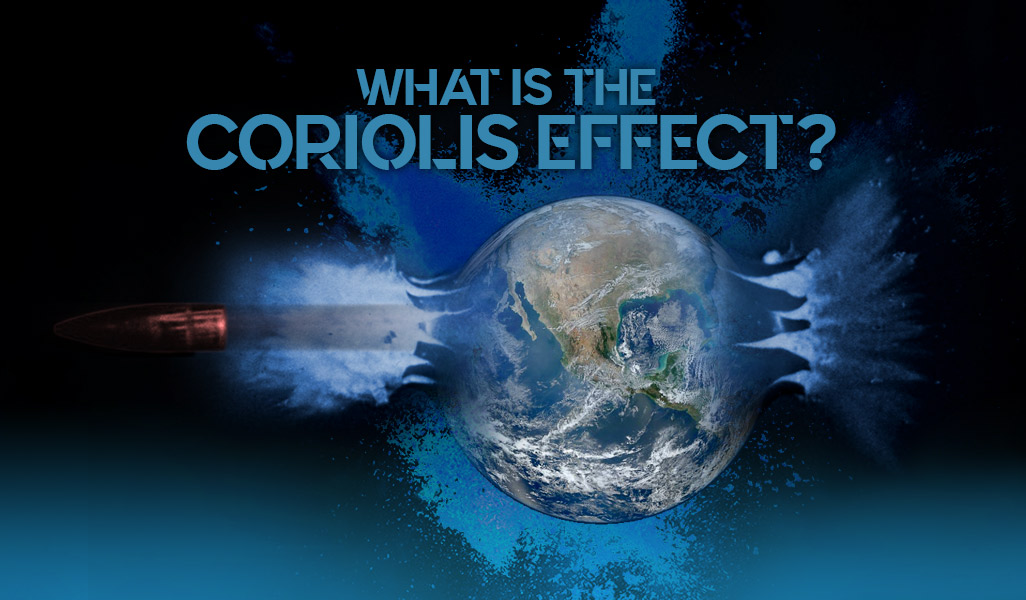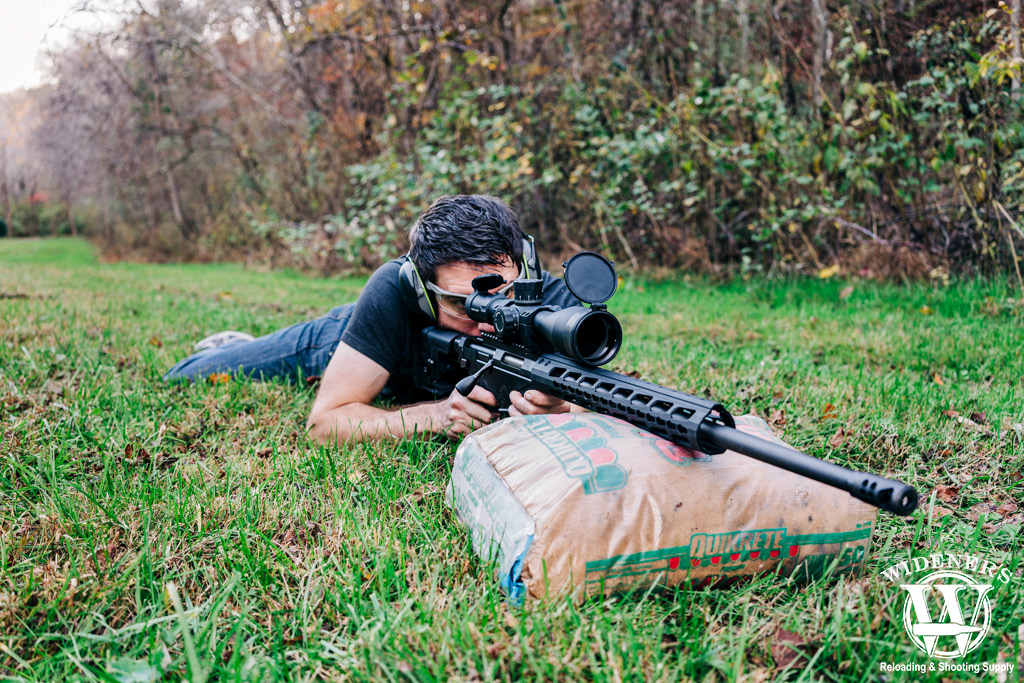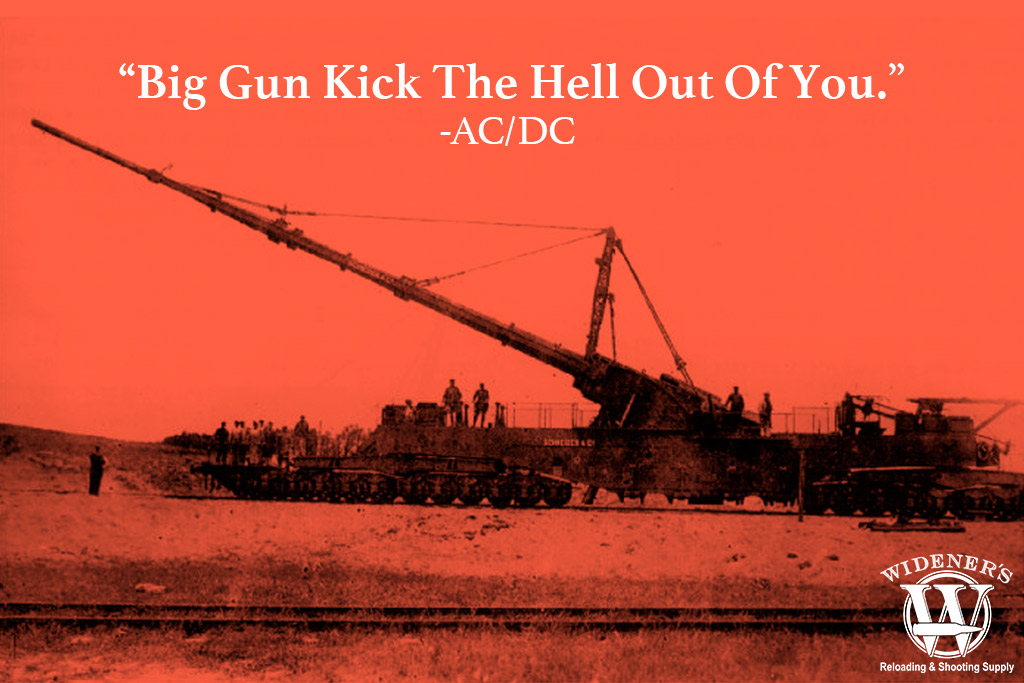

By Guy J. Sagi
Sleek flying bullets, improved cartridge design and firearms held to strict CNC tolerance contribute to any new long-distance shooting records, but there is more involved than just the latest and greatest. To connect regularly at 1,500 yards and beyond marksmen must adjust for a variety of factors largely immune to cutting-edge technology. Gravity leads the list, but another heavyweight lurks in the firing solution—Coriolis effect.
What Is The Coriolis Effect?

Despite urban legend, the Coriolis effect has little to do with the direction your toilet flushes.
Coriolis effect is a product of the Earth’s rotation and, in the case of firearms, moves the target away from the original point of aim when the bullet finally arrives. Total deviation is determined by time of flight, shot direction (azimuth), how fast the planet is moving at both the firing point and target and more. It’s dictated by a lesser-known Coriolis force that, thankfully, includes inertia as a key component. Together they create some simple rules of thumb worth remembering when you push the distance.
The previously obscure precision-marksmanship component didn’t get the respect it deserved until Mark Wahlberg delivered a pair lines of the movie “Shooter.” “There’s 6- to 10-second flight time so you have to shoot at where the target’s going to be,” he said while explaining an assassination plot would require a criminal intimately familiar with the factor. “Even the Coriolis effect, the spin of the Earth, comes into play.”
The term went mainstream overnight and watering-hole experts soon began lengthy lectures on its everyday impact. It’s often incorrectly cited as forcing toilets to flush in one direction in the Northern Hemisphere, for example, and the opposite way in the south. Despite scientific evidence to the contrary—and fully functioning commodes on the equator—the urban myth persists.
Storm Theory
The claim’s longevity is partly explained by the rotation of major storms. North of the equator hurricanes and cyclones turn counterclockwise. To the south they spin the opposite direction. It is indeed Coriolis effect at work with the weather, but there’s a big difference between them and tap water.
Clouds and typhoons are airborne, free of the earthly requirement to rotate. Meanwhile, the landscape below continues to do so at a scalding pace of roughly 1,000 miles per hour at the equator, slower toward the poles. Bullets on their way to a target are also in flight, albeit temporary. Yet, a target that appears stationary to a shooter continues to move while waiting for the projectile to arrive.
Northern VS Southern Hemisphere
Calculating the compensation for Coriolis is not exactly a firing-line friendly. It hinges on the earth’s speed of rotation at the shooting and target positions. It reaches its maximum at the equator and lowers to a theoretical zero as latitude increases. The direction of the shot is critical and with some trigonometry and bullet flight time, you get the precise information required to know where the target will be by the time your projectile arrives.
For those who insist, here’s a paper published by the Naval Surface Weapons Center, Dahlgren Laboratory, in 1975. Sharpen a couple No. 2 pencils and warm up the calculator before you dive in, though.
Thankfully, Sir Isaac Newton saves the day once again. His first law of motion does not make the math and measurements less time consuming, but it applies and supports the first, easy-to-remember Coriolis rule of thumb.
All shots taken in the Northern Hemisphere, other than those directly east and west, deflect to the right. Those south of the equator veer left.
Here’s why. Newton’s first law of motion states any object in motion tends to stay in motion and one at rest tends to stay at rest. So, the bullet on a .308 Win. cartridge at the equator is moving east at 1,000 miles per hour even while waiting in a rifle’s chamber. Hit the trigger and send it due north at a target and it leaves the muzzle at the expected velocity but also maintains that 1,000 mph motion to the east after leaving the barrel. The target, closer to the north pole, isn’t rotating as fast. So instead of connecting in the bullseye the bullet veers right.
Understanding Shot Displacement

Can the distance and direction you’re shooting potentially affect your accuracy with the Coriolis effect?
Shooting south in the Northern Hemisphere means the firing line, rifle, marksman and bullet are moving slower than the target. By the time that bullet arrives at the target it has moved from the point of aim and the bullet again hits to the right.
The opposite is true for the same reasons in the Southern Hemisphere. Shot displacement there, due to Coriolis Effect, will all be to the left.
Of course, there aren’t too many situations or ranges that provide due north or south orientations. Those calculations are where the trigonometry comes in. The azimuth (compass bearing toward the target) must factor into the equation for an accurate firing solution.
Just like those late-night commercials, “But wait, there’s more!”
Coriolis Effect: Shooting East To West
What if you’re shooting due east or west? Coriolis still applies even though you and the target are rotating at the same speed. The second rule of thumb is also simple to remember.
All shots, regardless of hemisphere, will impact lower than expected when sent west and high when traveling east.
The Earth is a sphere. So, targets to the west are rotating toward you and rising slightly on the horizon (atop the planet’s circumference). The bullet, in theory, continues toward your point of aim, which is no longer there because it’s moved up.
Anything to the east rotates down, in relative terms. The concept is easy to grasp, but difficult to embrace on a firing line when steel at 1,500 yards seems to be unmoving. It is, though, and so are you.
In The Beginning
The Coriolis effect begins with the bullet’s flight, literally point blank, although deviation is microscopic up close. So at what point should a shooter begin correction for Coriolis? That’s determined by skill, firearm and load accuracy and a host of other variables that must be weighed individually.
A research report issued by Michael Courtney and Amy Courtney in 2012 helps clarify the decision. In it the pair, who were attending the Air Force Academy at the time, provided Coriolis corrections for 168-grain Barnes TTSX bullets launched from a .30-06 Sprg at 2,800 fps due west at a latitude of 45 degrees north. At 500 yards the bullet struck 1/2 inch low. At 1,000 they found deflection was between 3 to 4 inches. Precision shooters at that distance and beyond adjust, but it’s up to you if it’s really beneficial. There’s a difference when the pursuit is hunting or ringing 3-foot-wide steel bison targets in unpredictable wind.
Even without running the numbers, though, the rules of thumb provide a solid foundation when it comes to addressing the challenges of really stretching the distance. The precise firing solution, however, gets even more complex when you combine the two and then weigh other variables including the difference in elevation.
Advanced Coriolis Effect Calculator
A variety of ballistics apps for smartphones and handheld units remedy the headache. Wideners has provided a convenient Coriolis calculator you can use for free here. Our suggestion is to plug in your load’s information, preferably with the velocity produced by your barrel length. Then print out our mini DOPE sheet to stuff in your range bag or tape to your stock.
Coriolis Calculator
Looking for a full-size DOPE sheet to put your calculations on? Having a library of different DOPE sheets for various rifle setups can provide you with invaluable accuracy data. You can create a sheet for each rifle, optic, and ammo combination you have in your arsenal. All it takes is a trip to the range and a little patience to record the data. Feel free to download and print our DOPE sheet by clicking here.
It’s also worth investing the time to run the program for different loads in your favorite long-distance cartridge. It goes without saying, but bullets with shorter flight time (higher velocity) are less affected by Coriolis. The Earth has less time to move the target out of the way, so to speak. Some of the differences can be surprising.
Bear in mind, too, the amount Coriolis effect alters point of impact can pale in comparison to tough wind you failed to DOPE downrange. For comparison, you can expect an average .308 Win. bullet launched due north in North America to deflect to the right somewhere around 3 inches at 1,000 yards. In east or west directions it will strike about 4 inches low or high, respectively, at the same distance. A full-value 10 mph wind can push the projectile, depending on its design and velocity, feet off target, not inches.
Who Was Coriolis?
Gaspard-Gustav de Coriolis introduced the world to his Coriolis effect and the corresponding Coriolis force that caused it in 1835. The French engineer’s work took on added importance in meteorology and ballistics sometime in the early 20th century. His work is still renowned to this day, even though the mechanical engineer and mathematician never dabbled in either science.
In fact, he really was not the first to identify the Coriolis effect. It was a pair of Catholic priests from Italy—Francesco Maria Grimaldi and Giovanni Battista Riccioli—who first described the phenomena in 1651 after witnessing it in artillery.
Break Out The Big Guns

The German heavy artillery brought out the big guns called “Berthas” for shelling enemies in World War I.
Ironically, when the Germans created a gargantuan line of artillery in World War I called Big Berthas, or Paris Guns, it was Coriolis’ namesake work that allowed them to strike Paris accurately from 60 miles away. He died long before hostilities broke out, but the havoc his equations made possible on the City of Light punctuates the importance of his work.
The German guns were mammoth in size, with barrels that weighed 140 tons and the projectiles they launched—234 pounds each—were the first manmade objects to reach the stratosphere. Each propellant charge tipped the scales at roughly 400 pounds and it took between 60 and 80 people to man one gun. Rate of fire, for obvious reasons, was not fast and they were not mobile by any stretch of the imagination.
It took nearly three minutes for the launched shell to reach Paris. Giving it plenty of time to move—but Coriolis’ equations proved true. Luckily, the slow barrages stopped as the front moved further from the city and out of Big Bertha’s reach.
The Coriolis effect is an important consideration for long-distance shooters who really stretch distances and demand nothing less than precision. Odds are good, too, it will live on in the urban toilet-flush direction myth, despite the fact the Library of Congress pretty much dispels that legend.


